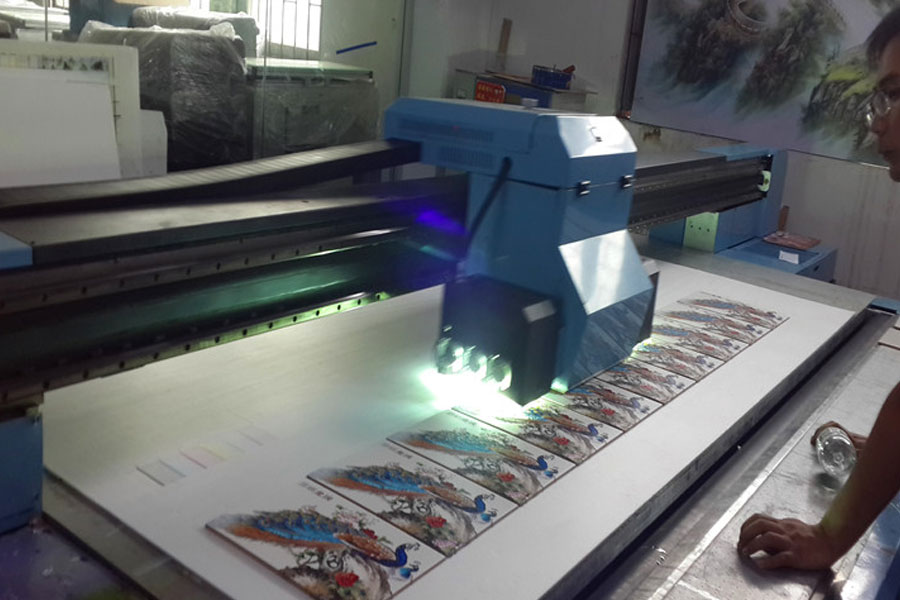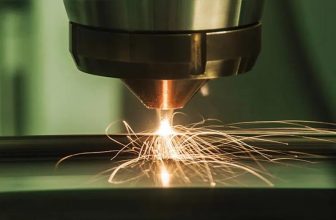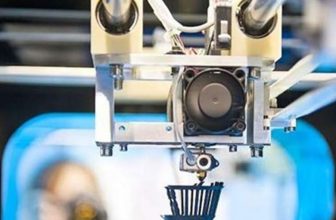
Guide: As an emerging manufacturing method, the impact of 3D printing on people during the manufacturing process often makes users ignore the related safety hazards. However, in fact, no type of 3D printer can completely guarantee that there will be no hidden operating hazards. Let’s take a look at the main hazard categories of 3D printers.
Whether it is installed in a factory or a bedroom, if it is used carelessly, a 3D printer may be dangerous, and the degree of danger varies from device to device. Therefore, Antarctic Bear has integrated various possible risks and listed the following main safety hazards for everyone to formulate safe operation procedures.
1. Burns
Security risk: The working temperature of most 3D printers is very high. For example, in the most common FF system, the hot end temperature can reach 300°C, while the temperature of metal 3D printers will only be higher. Touching the hot end without adequate cooling is likely to risk burns. Although many FFF printers have been equipped with a high temperature reminder function, there are still most inexpensive models that still have this risk. In addition, in addition to the hot end, the temperature conditions of the hot bed and printed parts are also worth noting.
Approach:
- Place the 3D printer in an area that is not easily accessible to children and unrelated persons
- Please wear gloves when handling the 3D printer
- Use a shell or various barriers for protection
2. Pinch or cut
Security risk: 3D printers are essentially mechanical equipment. Their motion system includes stepper motors, crawlers and pulleys. When these devices are running, all movements increase the risk of the user being pinched by the 3D printer. The printer will unconsciously follow the code given by the software regarding the moving position and moving speed. Although some machines are equipped with a closed-loop system, they can detect collisions and react in an appropriate way. However, most 3D printers still use an open loop system to create the direction of movement, and many desktop 3D printers use an open gantry structure, so it is very easy to be pinched when the finger is inserted into the machine while the machine is running.
In addition, the use of a 3D printer similar to the FFF system also requires the use of a scraper to shovel the model off the hot bed, which is accompanied by the risk of being cut by the scraper due to excessive force. The sharp edge of the scraper and the contamination on the blade can cause wound infection, so it should not be taken lightly. In addition, removing the support from the print also runs the risk of being cut.
Approach:
- Those with financial resources can buy a 3D printer with collision detection mode and a high-quality detachable flexible hot bed
- Wear anti-scratch gloves or other protective equipment
- Use a shell or various barriers for protection
- Make sure that the printer is in a safe state before contacting
- Slow down the motion range when removing the support structure, or use water-soluble materials and minimize the support structure
3. Fire
Security risk: Although this situation is unlikely to happen, there are indeed cases of fire on 3D printers. In some cases, the heat of the 3D printer can cause a fire, but there are also other abnormal situations, such as flammable materials falling into an open gantry machine, or firmware failures that continue to heat the hot end until it melts and catches fire.
Many products on the market now have protective measures against these problems, such as automatic shutdown in the event of a failure. One of the protection measures is called thermal runaway, which is designed to prevent the printer from catching fire. When the printer temperature reading and the heater are disconnected, it may reach a dangerous temperature and become a fire hazard. Thermal runaway prevents this from happening by tracking the temperature of the hot end and turning off the printer in time.
Approach:
- Keep the machine under surveillance at all times, install smoke detectors and place fire extinguishers nearby
- Make sure that the 3D printer has thermal runaway protection enabled
- Keep the 3D printer away from flammable materials such as curtains, and try to place it on a metal surface
- If you have no experience, try to avoid using self-assembled 3D printer kits
4. Nano particles or harmful fumes
Security risk: Nanoparticles refer to tiny particles of 3D printing materials that are emitted during operation. For example, in FFF printers, the wire is heated during the extrusion process, and this heat tends to release a small part of the material into the atmosphere. These particles are very small in size and can spread in the air, be inhaled and stay in the human lungs. But the degree of danger varies greatly, depending on the heat and materials used. Generally, higher heat tends to release more nanoparticles. There are some materials that emit more nanoparticles than others at a given temperature, such as ABS.
Similarly, because heating emits volatile organic compounds, they combine with water droplets in the air to form harmful fumes. There are reports that prolonged exposure to smoke can cause damage to the respiratory system.
Approach:
- Use a protective cover to close the device, or use an air filter to remove nanoparticles
- Ensure that the work area is well ventilated
- Use relatively safe materials, such as PLA and PETG, and try to avoid using ABS and nylon in unventilated places
- Activated carbon can be used to adsorb harmful gases emitted by ABS materials, such as styrene
5. Material Toxicity
Safety risk: Almost all 3D printer resins have a certain degree of toxicity, so manufacturers recommend using nitrile gloves when handling resin 3D printers and materials. Occasionally, the resin will not have much impact on the skin, just wash it off. However, long-term exposure may cause damage to the body’s immune system.
Approach:
- Always wear nitrile gloves when handling resin 3D printers and prints
- When using resin printers and post-processing processes, develop a “clean” workflow to minimize contact
6. Explosion
Security risk: Theoretically, the probability of a 3D printer exploding is very low, but some 3D printing materials can indeed cause an explosion if they are not handled properly. Taking the fine powder used in industrial 3D printers as an example, active metal powder is explosive. For example, titanium, a popular 3D printing metal material, will explode if the powder is heated enough, and the explosion caused by improper handling of this powder can also cause structural fires.
Approach:
- Absolutely follow a safe work process when handling metal powders
- Use inert protective gas to change the gas atmosphere during the manufacturing process
- Choose a metal 3D printer with a protective device
7. Electric shock, leakage and other electrical safety hazards
Safety risk: After all, 3D printers are electrical appliances, so electrical safety is an issue that cannot be ignored. Power supply voltage or mechanical static electricity can sometimes overflow from the 3D printer to the entire metal frame. The former may be caused by: incorrect ground connection, failure of the filter capacitor in the power supply, and inability to dump the voltage to the ground; or the power cord is missing and is in contact with the 3D printer frame. In addition, some 3D printer manufacturers use power supply voltage bed heaters to shorten the heating time. This shortens the heating time, but increases the risk due to potential wires around the power cord, and the wires will fatigue over time.
Approach:
- Ensure that the grounded power supply works normally, or use additional “grounding” methods to reduce mechanical static electricity
- When assembling a 3D printer kit or performing repairs, consult relevant experts or technicians
- Connect the 2-pin plug to the 3-pin plug
- Keep the ambient humidity between 20%-30%, reduce static electricity
- Purchase a 3D printer with a closed power supply (similar to a laptop power supply) and connect it to a normal DC power outlet
The above are most of the security issues that will occur. With the update of 3D printers and related cnc machining technologies, there will be various security risks. Therefore, it cannot be taken lightly because 3D printing appears to be safer than traditional machining. I wish all friends who like 3D printing technology or are using 3D printing equipment to avoid unnecessary harm and enjoy the fun of technology!





